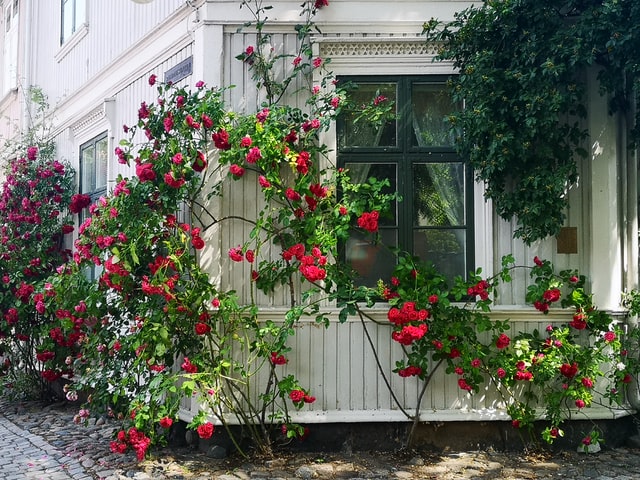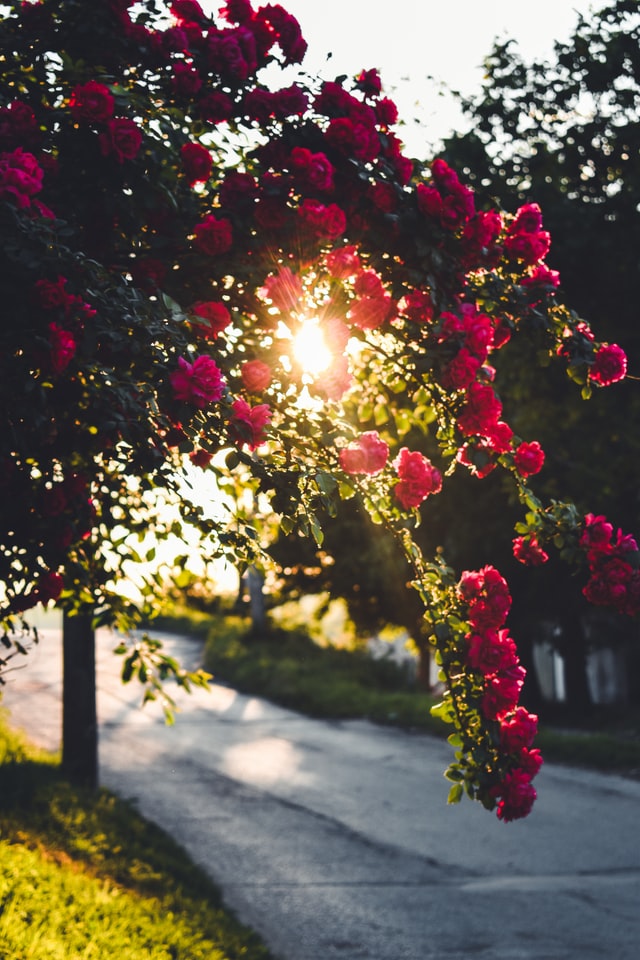I recently came home from a tour through Arizona and part of California. The types of gardens were so varied and each one lovely in its own way. The alpine gardens with drought-resistant, cold hardy plants near the Grand Canyon in northern Arizona were very green. Vivid purple seemed to be the theme of the tropical floral gardens and jacaranda trees of southern California. The succulent gardens and xeriscaped gardens in southern Arizona were very, very different than we have here in Enid. But one garden all areas had in common were rose gardens.
Roses are such a popular flower throughout the United States, but especially in our gardens here in Oklahoma. Oklahoma climate is well-suited to growing roses. Rainy spring and early summers help to establish the plant roots. Our hot, dry weather is conducive to lovely blooms, while our relatively short, mild winters help the rootstock to survive from year to year.
Preparing for planting roses ideally should begin in the winter by determining what kind of roses you want and where you plan to plant them. An open, sunny planting site protected from strong wind is preferable for roses. Rose plants should have at least six hours of full sun. This will dry dew and overnight rainfall collected on the plants and reduce the occurrence of mildew and blackspot. We will talk about these diseases later. If you want to plant your roses close to a wall, be sure to keep it at least eighteen to twenty-four inches from the wall to prevent sunburn from reflected heat.
Bushes or vines? Bush roses such as hybrid tea roses, floribunda and heirloom roses are very popular. Hybrid tea roses can grow from two to six feet and have one bloom per stem. They make great cut flowers for vases. Floribunda roses have clusters of flowers which bloom prolifically for constant color all season. This rose is a vigorous bush that is hardy and requires less care than hybrid tea roses. Floribundas are useful for bed plantings, massing in a shrub border, or even for containers. Old-Garden Heirloom or Antique Roses produce abundant spring flowers, but are generally less attractive than today’s varieties. However, they are much more fragrant. Cabbage or Moss roses are typical types that open to fragrant pink blooms.
Vine or climber is a general term for roses that produce long, vigorous canes that cannot support their own weight. They are usually trained on trellises, fences, walls, posts, or arbors. Many of these varieties can be used as ground cover to add both texture and color to your garden. Ramblers are one the most vigorous climbing roses. The small flowers bloom in clusters in the spring on the previous season’s growth. Most are hardy and require little or no winter protection. Climbing Floribunda and Polyantha roses are climbing cultivars of bush-type plants. They flower continuously and are hardier than climbing hybrid teas.

To care for your roses, be sure to grow them in a grass-free area. Keep them mulched to maintain moisture and reduce weeds. Water your roses only after the soil becomes rather dry. Soak the soil to a depth of 18 to 24 inches. Frequent light waterings cause shallow root systems which are easily damaged during drought. Soaker hoses or trickle irrigation are ideal to apply water slowly and prevent the wetting of foliage.
Wet foliage can lead to fungal plant disease in roses. Black Spot is a fungal disease characterized by circular black spots on leaves that vary from a half inch to more than one inch in diameter. When plants are badly infected, leaves drop prematurely and canes may become completely bare eventually killing the plant. Spores of the fungus are spread mainly by splashing water or rain. They germinate in water and infection takes place when water remains on the leaves for six hours or longer. Another common fungal disease is powdery mildew – a powdery, whitish coating on the leaves and other plant parts. Some plants may become stunted, leaves may curl, become dried, and drop off. To prevent and treat powdery mildew, keep roses trimmed with plenty of room for air to circulate through the canopy. Apply a fungicide weekly from spring until the weather dries out.
Another disease of roses is called rose rosette disease or RRD. Unfortunately there is no cure or treatment for this. It is easily transmitted to other rose bushes. Any roses with RRD need to be destroyed. Contact the Oklahoma Extension Office to learn more about RRD.

Roses should be pruned to keep roses looking their best. Prune to maintain plant shape, remove dead or diseased wood (often dark or blackened canes), and regulate desired flower size. Additionally, pruning causes new growth. Spring blooming roses should be pruned only after the flowering season. Most modern roses should be pruned annually. If only a few large flowers are preferred, cut the plants more severely. Prune for an open‑centered plant. Make all cuts just above outward‑facing buds, slightly above and angling downward away from the bud. Remove branches that grow toward the center of the plant. When two branches cross, the smaller one should be removed.
With just a little planning and care, you can have beautiful, healthy roses in your garden. Be sure to check out the Oklahoma Extension Offices publications HLA-6403 – Roses in Oklahoma, EPP-7329 – Rose Rosette Disease, and EPP-7607 – Diseases of Roses available on-line at https://extension.okstate.edu/fact-sheets/index.html.






